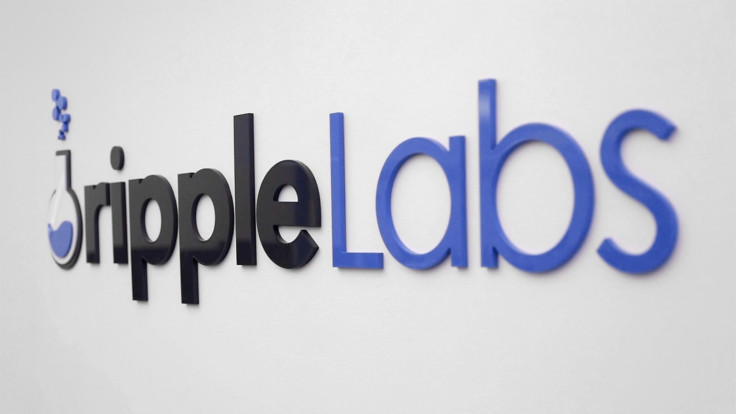Ripple's Chris Larsen adds up savings for banks using distributed ledgers

Banks will save a fortune by moving from antiquated, centrally governed payment systems to new technology that can connect corporate capital with the ease and efficiency of email.
The current system of correspondent banking mitigates the risk and complexity of connecting payment originators and receivers by tying up billions in floats and using big established money sending banks.
This interoperability problem at the backbone of corporate payments - the fuel of all global supply chains - will be solved by decentralising the system using instantly updated, distributed ledgers spread across a network of users.
Chris Larsen, founder and chief executive officer, Ripple Labs, told journalists at a recent technology briefing this use case can work "right now", and explained how he predicts the opening up of new and competitive liquidity markets in the process.
Unlike the bitcoin network which is updated by a large peer-to-peer community, Ripple's focus is on permissioned distributed ledgers, a business model also offered by the likes of Eris Industries and Hyperledger.
Larsen said: "There is a lot of hype about distributed ledgers but we think there is a very specific use case for them right now and that has to do with a key problem in the world that our payment networks are silent.
"The system in the US does not talk to the systems in Europe or in China or Australia, certainly from a national perspective and from private company networks - PayPal does not talk to M-pesa, for example."
Larson drew analogy from the way communications networks are completely wired together and interoperable - this is happening now to financial networks as we enter the next stage of the "internet of value".

Correspondent banking is the only connective tissue to work around the lack of operability between payments systems. This goes back to the whole idea that all value networks must have a central operator, but in fact there is simply no one central operator that everybody will trust.
This results in a sending bank in one network probably using one of the five or six top global money sender banks, which are expensive and require the sending bank to put a lot of capital in float.
"They then take on a tonne of risk because things could fail in the middle cause you are going through multiple ledgers. And you are just not getting very much competition for the liquidity from these global money sender banks," said Larsen.
He located the specific pain of interoperability in the system with the cost of the float. Corresponded banking takes days to send value around the world, so corporations and banks making payments have to put money up, sometimes in hundreds of bank accounts all over the world in lots of different currencies, tying up billions of dollars.
Capital costs
He said: "Every originator has risk, so when they have to get that capital they have to pay up for it. In this example, which is conservative, the cost of capital is 5%."
The real cost of payments stays hidden. A lot of people in the payments industry just see the FX and transaction costs, but in fact the cost of the float is about 80% of payment costs for originators' funds.
Larsen suggested a neat alternative: putting that liquidity out to bid to more competitive market makers and liquidity providers.
"If you look at market makers today - investment banks, private equity funds, hedge funds, just about any other liquidity provider active around the world - you can cut the costs of that float easily in half and probably more.
"Instead of an originator paying 5% for their float, you would want to be able to see any variety of investment banks and hedge funds who might be offering 2%, because they just simply have a lower cost of capital.
"Those hedge funds, those market makers could easily make very attractive spreads by providing that float at a mark-up."
Larsen pointed out that liquidity providers are not going to accept the credit risk of most originators of payments; this has to be placed with a custodian.
"So banks can provide that," he said. "They are the ones that provide the custody of assets, they provide those deposits that now are the backbone of a potential liquidity market place. So why hasn't this happened yet?
"It comes down to distributed ledgers. This is really what we see as the big value proposition right now for distributed ledger technology. For the first time sending and receiving banks can interoperate with each other directly without a corresponded bank, with nobody in the middle.
"They do that in seconds, now that settlement risk is off the table and they can do it in an environment where they are not putting up the capital but instead they are automatically being routed to a competitive market place of liquidity."
New liquidity markets
Complementing the neutral, real time distributed network, is the ability for market makers to place bids and asks in any currency and have that sit as deposits without credit risk to payment originators, he said.
"That will be available to anyone via some path-finding algorithm that will automatically route a payment to the lowest cost of liquidity provider. We simply have not had that to date - we do now.
"If you think about it, that's not that different from what we are already seeing all over the place with the internet itself.
"The internet is all about complex algorithm paths to find the best provider to match supply and demand of all kinds of things, Uber being one example.
"That is exactly what we can do with liquidity; now all of a sudden liquidity can get to where it is needed in real time and without having to be given first to a counterparty as a credit to credit product.
"That's a big deal. The source of our payments system is very arcane and complicated. But it is also the life blood of our supply chains," he said.
© Copyright IBTimes 2025. All rights reserved.






















